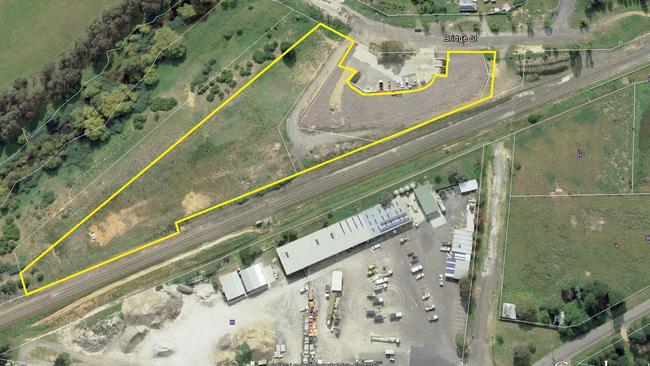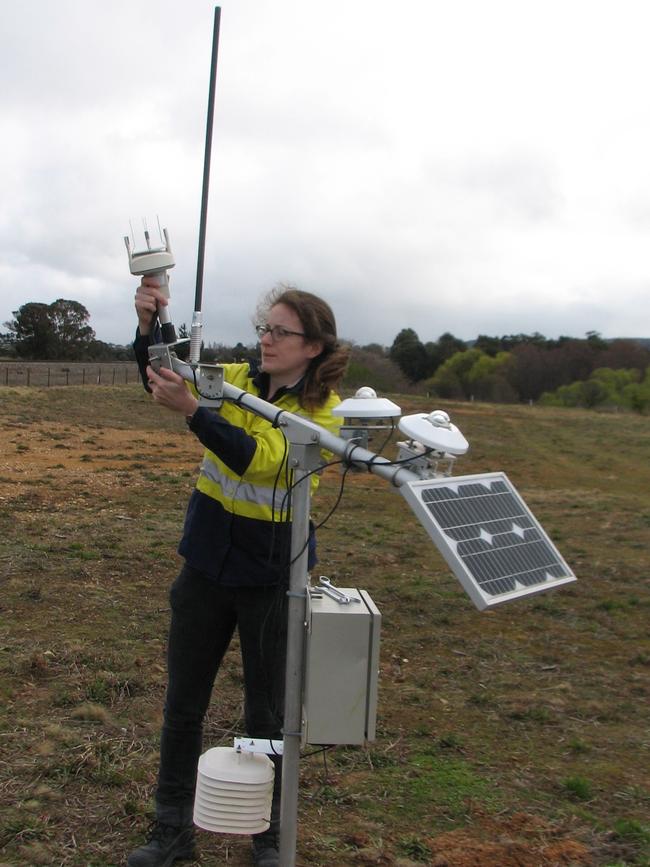‘We’ll build it ourselves’: the little solar miracle in Goulburn
Farmer Ed Suttle still chokes up when he talks about the start of a grassroots plan to turn an old gravel pit into a solar farm. ‘Within an hour, we had $500,000 committed. It was just stunning.’

Cattle farmer Ed Suttle still chokes up as he recalls a public meeting at the Goulburn Workers’ Club in October 2020 when about 100 people gathered to hear of plans for a community solar farm.
The NSW Southern Tablelands city is a conservative place, he says, and its elected federal and state representatives down to the local council have opposed large-scale renewable energy projects in the broader region. Huge wind farms and plans for new high voltage transmission lines to the north have caused a stir and there’s division over British energy giant BP’s plans to install 740,000 solar panels on 700 hectares about 12km south of Goulburn.

This is an article from The List: 100 Top Energy Players 2024, which is announced in full on November 22.
The community-owned solar farm proposed by Suttle’s group is tiny in comparison, but he knew this public meeting would be a test of community interest in clean energy.
“We presented for about an hour, the technical, the financial, the potential benefits, the potential risks, the whole box and dice,’’ Suttle recalls. “We had already formed a cooperative, so we said to those 100 people, if you’re in, go and join the co-op and tell us how much you’re going to invest.”
He pauses for dramatic effect. “Within an hour, we had $500,000 committed. It was just stunning. I still can’t talk about it without almost crying.’’
His little band of local volunteers, average age 60-plus, had already spent a few years scoping out the framework for the project, confirming its technical and financial feasibility and spreading word throughout the town, but this was beyond their wildest dreams. This idea born around a kitchen table out of frustration at government inaction on climate change was poised to take flight.
After that meeting they sat and stared at each other in stunned silence. “It just showed us what a wonderful community we live in,’’ Suttle says.
A week later they ran the same presentation online for those who had missed the first meeting and raised another $750,000. The minimum spend was $400, the equivalent of one installed solar panel, and the largest single investment was $100,000, all on a one member, one vote principle.
It turns out that community interest was the least of their problems: investors from Melbourne, Perth and as far as England wanted in, even though the decision was made to keep it as local as possible.

“Our target was $2.1m [to match a NSW Government grant] and we had it within three or four months,” Suttle says. His group later decided to add a 2300kWh storage battery and raised another $600,000, with $200,000 pitched in from the NSW government. All up, about 360 people invested and 1500 people joined the database.
The result is that sometime next year, this little outfit in Goulburn will build what is believed to be the largest community solar farm with a battery in the country, generating enough power for up to 500 homes. “In the scheme of things, it’s tiny, but it says so much, and it says a lot about Goulburn,’’ Suttle says. “On the main street, you’ll bump into someone who’s either interested or they’re an investor and there’s this permanent chatter going on. There’s immense pride in the community for what’s happening.”
Community solar projects
Solar panels cover rooftops around Australia, accounting for about 11 per cent of our electricity supply, but now local communities are taking things a step further. They want a piece of the clean energy pie and are raising the money and accessing government grants to fund a variety of renewable schemes.
According to latest figures, Australia has more than 126 community energy projects involving 37,500 supporters. They range from a solar microgrid in the remote Northern Territory town of Marlinja, which relies on unreliable and expensive diesel generation, to a 1.5MW “solar garden” in the NSW Riverina town of Grong Grong where 175 investors, who are unable to get the benefits from rooftop solar (such as renters), have joined up to receive credits on their electricity bills.
Two community-owned wind turbines near Daylesford in Victoria generate enough energy for about 2000 homes and plans are afoot to add solar and battery storage. In the ACT the 1.3MW Majura Valley Community Solar Farm, which powers up to 260 homes per year and was funded by about 350 people who invested between $500 and $100,000, began operating in March 2021 with the help of a 20-year power purchase agreement with the ACT Government.
Last year alone, community energy groups raised $86.9m, resulting in 12MW of new renewable energy generation, according to a report commissioned by the Australian Renewable Energy Agency. This reflects tremendous community effort – these projects are hard to get off the ground – but it’s a small fraction of the 3100MW of rooftop solar installed over the same period and tends to reflect less efficient emissions abatement per dollar spent, the report found.

Notwithstanding the challenges for small groups, “there is an extraordinary gift of community enthusiasm for local participation in the energy transition”, the report by climate change investment and advisory firm Pollination found.
Return on investment for the Goulburn project is estimated at about five per cent per year, but investors are driven by a range of motivations, Suttle says, outlining the results of a survey undertaken by his group, the Goulburn Community Energy Cooperative. Supporters liked that it was a clean investment and that the profits remain within the community – the plethora of foreign-owned companies building large scale renewable projects in Australia has caused considerable angst in some areas.
“People also told us that they thought it was sending a message to government,’’ Suttle continues, “and the fourth reason was that, as part of the rules of the co-op, a percentage of profits must go to a community fund to assist those within our community who are disadvantaged.”
The project has been a study in the benefits of early community consultation. Before going public, organisers visited near neighbours to inform them of the project and seek their support. It has a small footprint, with about 4500 panels, but notably there wasn’t a single objection.
The 1.35MW farm will be built on a 2.5ha site between Sydney Rd and the railway line on Goulburn’s outskirts which has access to existing transmission. Drainage has been problematic on the leased land, and after completing works to level the property the organisers have just received a construction certificate from the local council.
“Once that happens, there will be final civil works and then holes in the ground,’’ Suttle says.
They hope to have it up and running some time mid-next year, with the power either going into the grid, or to a local earth removal business to power its electric vehicles in a power purchase agreement. “In a way, that would be keeping it within the community, which would be just sensational,’’ Suttle says.
After all this time, it will be a big day when it finally becomes operational. Suttle reflects on the thousands of hours volunteers have spent working on the project. “We didn’t know what we were doing; we were just a bunch of people from the community who wanted to do something and we had to learn as we went,’’ he says. “It’s just been thrilling to be part of. I cannot wait for somebody to come and flick the switch.”





To join the conversation, please log in. Don't have an account? Register
Join the conversation, you are commenting as Logout